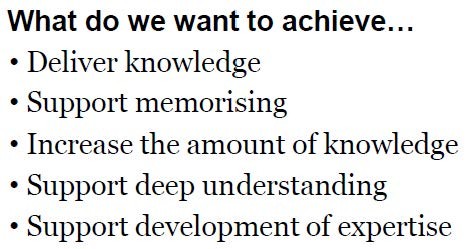博文
"中芬教学法研讨会"作业
||
On “Pedagogical Learning Outcome”
Jian Yu
Functional Materials Research Laboratory, TongjiUniversity, Shanghai 201800, China
Since joining Tongji University in 2006, I am just performing supervision for graduatestudents and not tuition on university bachelor students. This semester, ourlaboratory will emerge into college of material science and engineering and I mayhave some lectures for university students. In visible future, I will become areal teacher. On this turnaround, I need to summarize my past actions and setnew starting line so I join this pedagogical workshop to seek fresh air.
On what is learningin a university context, G. Gibbs describes “Learning by doing: a guide toteaching and learning methods”. In chinese, learning and researching is alsotermed “做(zuo)学(xue)问(wen)”. In fact, it has providedone effective method of learning, which includes three interactive ways of 做(doing), 学(reading) and 问(asking). In my own learning and researching, I found that they are in the way and thusoften introduce them to my graduate students.
In practice, there are twoapproaches to learning, deep and surface orientation. Their goal, activity andoutcome are summarized in the following table. Many comments and suggestionsare also learned from group discussion and gallery walk.
In my experience, students aredivided into two kinds: deep student: who want understand things theyencountered and surface student: who don’t want understand things theyencountered. Here, no intermediate kind, for you cann’t say they 80% or 50%want to understand. In my case, I stressed students pay more attention tofundamental theory on ceramic material processing and discussed with them. Forsurface students, they often said they understand during the discussion.However, bullshit, it is not so. When you asked them again, they said theyknown fundamental theory of ceramic processing is gold but it is very hard tobite. Uhhh…
A good teacher should be passionate on teaching procedureand students, choose particular way for different students, and indulge in “askingand answering” course as a teaching process. In the course of asking andanswering, you can observe every student carefully and provide particular needsfor him. Checking culture and education history, it is found that “asking andanswering” is a basic way for delivering knowledge and idea. For deep students,you will soon find out your limit and their sparkling, then you can deep yourunderstanding and perfect your ideas together. For surface students, you canfind their weakness and choosing efficient methods to penetrate, inspire andinstruct them to engage in active participation.
For those deep students, anymethod is good method. Your sponsorship is just to choose them on time based ontheir efficiency. However, for those surface students, any method is not goodexcept that you can make them finding pleasure and then let them engagingactive participation. If not, to force them or to quit them. ^o^ I don’t know.
How to engage students inactive learning? This is my focus point. “Be present when you are here.” is agood standpoint for everyone. Sure, I tried using various kinds of teaching methodsto engage my graduate students being present when they are there. For thosesurface students, it is main problem and difficult task. For those deepstudents, you need just to join together with active participations: practicality,experimenting, sharing experiences, discussion and empathic listening.
They are not all. Through teaching, the altitudeto enjoy life and the capability to create knowledge and life, I think, shouldbe one of most important targets.
Be as realistic as possible.With strong passion, work together and let student feeling enthusiasm of theirstudying and researching. Might they engage in active life and living withpleasure.
https://blog.sciencenet.cn/blog-32670-784447.html
上一篇:多重铁性材料研究(十五)---居里温度的决定因素
下一篇:磁电多重铁性研究120年

